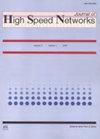A complete robust control network based on skewed temporal logic
IF 1
Q4 COMPUTER SCIENCE, INFORMATION SYSTEMS
引用次数: 0
Abstract
The robust control network for nonlinear large-scale systems with parametric uncertainties also considers the uncertain robust stabilization problem for controlled networks. In heterogeneous populations, hybrid regression models are the most important statistical analysis tools. To aim of the study is to conduct a more in-depth analysis of the existing completive robust control networks relying on biased temporal logic. Compared with the symmetric distribution, the skewed distribution can obtain accurate and effective information. Therefore, a time-series logic model under skewed distribution is proposed. The temporal logic under skew state is applied to describe the normative language of fuzzy systems. Firstly, the mixed nonlinear regression model under skewed distribution data is introduced to test whether the temporal logic formula can be realized under the skew state. Secondly, through the method of reduction, the control flow interval logic CFITL is studied, and the time series logic sequence is used to describe the measurement output loss. The sufficient conditions for the control network system to satisfy the exponential stability and H ∞ performance index are given. The linear matrix inequality obtains the completeness control network to be designed, and the effectiveness of the proposed method is verified by stochastic simulation experiments. Finally, the method is verified to be practical and feasible based on actual data. The maximum recognition rates of nearest neighbor classification, nearest subspace classification and biased distribution temporal logic classification reached 0.9019, 0.9622 and 0.9304, respectively.基于歪斜时间逻辑的完整鲁棒控制网络
具有参数不确定的非线性大系统鲁棒控制网络还考虑了被控网络的不确定鲁棒镇定问题。在异质群体中,混合回归模型是最重要的统计分析工具。本研究的目的是对现有的依赖于有偏时间逻辑的完备鲁棒控制网络进行更深入的分析。与对称分布相比,偏态分布能获得准确有效的信息。为此,提出了一种偏态分布下的时间序列逻辑模型。利用倾斜状态下的时间逻辑来描述模糊系统的规范语言。首先,引入歪斜分布数据下的混合非线性回归模型,检验歪斜状态下时间逻辑公式能否实现;其次,通过约简的方法,研究了控制流区间逻辑CFITL,并采用时间序列逻辑序列来描述测量输出损耗。给出了控制网络系统满足指数稳定性和H∞性能指标的充分条件。利用线性矩阵不等式得到待设计的完备性控制网络,并通过随机仿真实验验证了所提方法的有效性。最后,通过实际数据验证了该方法的实用性和可行性。最近邻分类、最近邻子空间分类和有偏分布时间逻辑分类的最大识别率分别达到0.9019、0.9622和0.9304。
本文章由计算机程序翻译,如有差异,请以英文原文为准。
求助全文
约1分钟内获得全文
求助全文
来源期刊

Journal of High Speed Networks
Computer Science-Computer Networks and Communications
CiteScore
1.80
自引率
11.10%
发文量
26
期刊介绍:
The Journal of High Speed Networks is an international archival journal, active since 1992, providing a publication vehicle for covering a large number of topics of interest in the high performance networking and communication area. Its audience includes researchers, managers as well as network designers and operators. The main goal will be to provide timely dissemination of information and scientific knowledge.
The journal will publish contributed papers on novel research, survey and position papers on topics of current interest, technical notes, and short communications to report progress on long-term projects. Submissions to the Journal will be refereed consistently with the review process of leading technical journals, based on originality, significance, quality, and clarity.
The journal will publish papers on a number of topics ranging from design to practical experiences with operational high performance/speed networks.
 求助内容:
求助内容: 应助结果提醒方式:
应助结果提醒方式:


